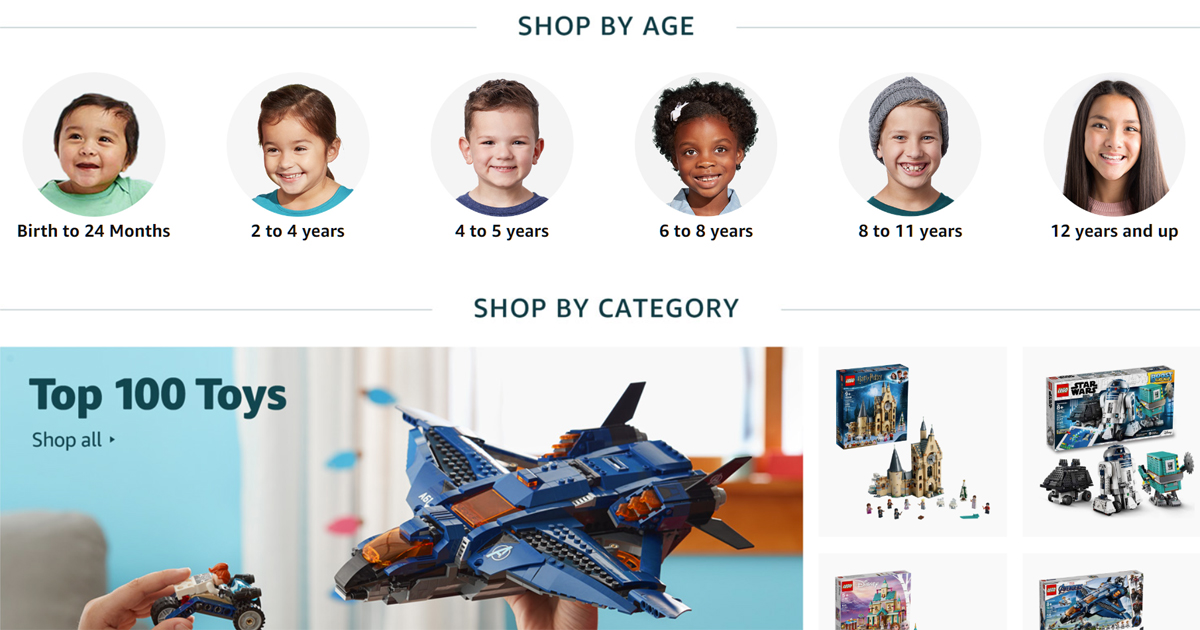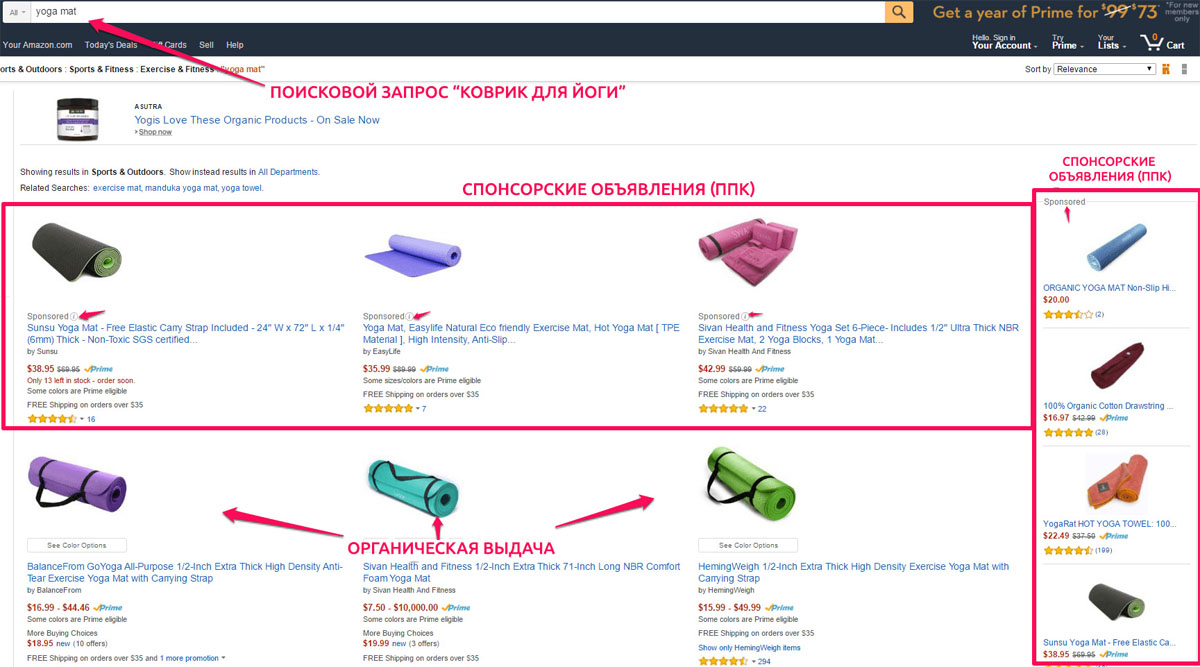
Many online stores for Christmas and New Year make a selection of their most popular products. They are designed to help the user choose the right product. Most often, parents are guided by them, buying gifts for children. It’s easier to understand what the younger generation is now interested in.
Well, there we did the analysis of the best-selling products on Amazon. And they saw that then such things really began to be ordered through us more often.
So, it turns out that one cannot believe such collections.
On the eve of the holidays, a few days ago, Amazon released its detailed toy selection guide . The best things for every age, the "Top 100 Toys" of each category. Based on the data on this page, hundreds of thousands of American parents will choose a Christmas present for their children. Amazon, after the bankruptcy of Toys R Us, is the largest toy seller on the continent. It accounts for 60-70% of all sales of goods of this category in Canada and the United States. And here - the guide shows all the top toys. Fine!
There is only one problem. Nowhere is it indicated that brands can pay for staying on this page. In reality, in just two months, November and December, Amazon plans to earn from the ads on this page up to hundreds of millions of dollars. Next to the really “top-end” toys that are on the list because of their large sales and high ratings are those who simply gave the company money.
Judging by the documents received by Public Citizen, brands pay Amazon up to $ 2 million for one place in the Holiday Toy List. The more money sponsors give, the more they can “insert” into this “honest” list. For a place at the very top - you need a separate surcharge. Amazon is also planning to implement a similar system at its summer sale, Prime Day, only advertising prices there will be one and a half to two times lower.

Why on this occasion rises bucha? It’s just that the company does not in any way inform customers that it is advertising in front of them. There is no way to distinguish a “real top” from a “top for $ 2 million”!
In regular search results, Amazon’s promoted products feature a Sponsored die. Everyone is used to it. On such advertising, the company annually earns more than $ 3.5 billion. On this account, Amazon is now the third largest advertising platform in the United States, immediately behind Google and Facebook.
Although their number of such advertisements is growing every year, for the most part no one has had any problems with this. You just need to scroll lower and lower, and look more precisely to find a product whose price does not include an additional budget for advertising.
But in the lists of "guides" and "sales tops", it turns out that users do not have such an opportunity at all. Any of the products may be advertising. Amazon does not even disclose what percentage of the selected toys appeared on their list for money. Of the 1,700 products, this is at least a few dozen, but perhaps even half. All the cards are in the hands of the store. Whereas before Amazon was impudent mainly due to sellers, now buyers have come under attack. They simply cannot trust what they see.

Here, advertising, at least somehow, can be distinguished
Robert Weisman, president of the Citizen Consumer Protection Group, said that of course, Amazon has the right to advertise on its website, which is completely legal. But the problem arises if the world's largest retailer does not reveal to consumers what is advertising and what is not. It turns out a real fraud: obviously, the information is not disclosed precisely because users more trust recommendations from those sources that they consider independent. If they knew that some of the places on the list of “tops” were paid, such an advertisement would have less effect.
Weissman explains:
They do not write a “paid ad” on such products because it changes the way consumers perceive such a list. If it consists entirely or partially of paid advertising, people have the right to know.
Amazon responded by comparing receiving payments for placing toys on a list with how offline supermarkets sell brands the best shelf space. Like, the fact that customers are not disclosed all the details of the selection is a common practice. In an e-mail address responding to the allegations, a company spokesman said:
Each product in our annual list of the best toys is carefully selected. It includes both the most successful products of the year, as well as new releases, which have not yet proved their worth, but show great potential. The list is created by a team of experts based on the design, innovation, quality and “playability” of the product. Ideas for selecting products come from many sources, including from our trading partners who have the opportunity to nominate their best toys and increase their recognition.
Toy manufacturers agree to pay a lot of money for appearing on such lists because November and December bring them up to half of their annual sales. Many parents are guided by these guides when choosing suitable gifts. Especially when the list is the store itself, in which you can immediately buy it.
Walmart uses a similar scheme to build its list of Toys Buyer's Picks . Despite the name, this is by no means the choice of buyers, but of advertisers. For the appearance of each such toy on the page, the store takes $ 10,000 per month. The company also has a list of Top Rated by Kids , a little more independent. It is compiled on the basis of reviews of real children who test and rate a hundred toys in July. But in order for your product to be selected in this hundred, you must be prepared, again, it’s good to pay extra. And if the children reject the goods, they simply will not appear on the list.

Kids chose this
Parents who want to give their child the best and really interesting toy for the New Year, in fact, have no choice. Youtube and self-proclaimed "experts" from social networks are paid for one or two, especially in such profitable months. User reviews can also be bought in tons, and it will cost less than $ 2 million.
There are independent third- party sites like Toy Insider and TTPM . But one can argue about how independent they are. Some of these resources are actually owned by the toy manufacturers themselves, this is a standard procedure. This is how many lucrative industries work in America. For example, the sites that make up the top best clinics in the country for getting rid of drug addiction belong to the owner of a pair of these clinics.

The law is rather ambiguous as to which information should be disclosed. If you have a hidden interest in compiling a list of “tops,” as you can see, it’s not at all necessary to disclose it. The Federal Trade Commission (FTC) issues laws and general recommendations, but many perceive them as they wish. In the worst case, the company pays several million in the form of a fine. Which can more than be blocked by income from such hidden advertising.
For example, according to the rules, if there is a U-turn in the magazine with one large photo of the runner in Nike boots and the brand logo, this advertisement is so obvious that you can not report it. Everyone understands that just because the photo did not appear there. But if the same Nike wants to publish a story or news about its new boots in the same magazine, this news should be clearly marked as advertising. However, buying yourself a place in a long catalog or list of products is neither one nor the other. There are no clear rules. The FTC has not punished anyone for such a practice, but everything that has not yet been banned, as you know, is allowed!
Listing is a dynamic part of Amazon’s business. It sounds funny, but the numbers don't lie. In 2017, the company, judging by the reports, received $ 120 million in revenue from them. This is 40% more than a year earlier. Lists of the “best” toys, electronics, and home goods brought the most money. This year, total revenue from ratings and lists of products with advertising may exceed $ 250 million.
Among other online stores, Amazon stands out also by how much money it requires for advertising. And not only on the lists. A thin line on top of search results in November and December sells for $ 500,000 per month (in other months - $ 150,000). Similar positions at the top of the pages at Walmart cost $ 180,000 in November and $ 132,000 in December. Walmart generates five to six times less traffic, so Amazon’s offer is even better in comparison.

For such a logo plate you have to pay half a million
Public Citizen has filed a complaint against Amazon with FTC this summer - claiming that on its Prime Day, the company did not do enough so that buyers could distinguish paid promos from real recommendations. FTC has confirmed receipt of the complaint, now the proceedings are ongoing.
But for us, for the time being, this may be a lesson. If even Amazon and Walmart do not disdain to do this - who will be above this? Which company, list, review or rating can you be sure of? Russian bloggers with their "advertising posts are always tagged with the tag" advertising "" seem to be the pinnacle of honesty!
Well, of course, the final annual reports are now being called into question, the first places in which gadgets of Amazon itself always occupy. Considering that in the United States delivery is only free from $ 25, the top should always have ordinary household goods, like toilet rolls, garbage bags or sets of batteries. Now it’s clear that this is being supervised. Only those things that generate profit companies are included in the rating. That is, either its own devices, or products with a good margin.
That's it.
P. S. This year, Black Friday is scheduled for November 29, but sales in large stores are already underway. Here, according to our observations, there is no deception (except for rare exceptions, such as Carter's). Unlike China, these discounts in America are most often real. Gadgets and clothes can be bought at prices 20-40% lower than usual. And deliver goods to Russia allows Pochtoy.com . $ 12 for a pound. Insurance. Free consolidation of parcels, free storage of goods in stock for up to 70 days.
